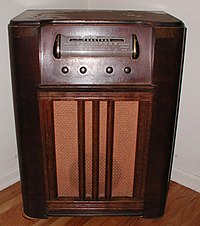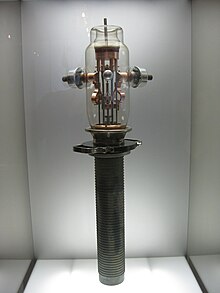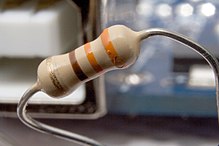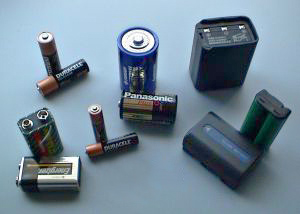Engineering

Engineering is the discipline, art, skill and profession of acquiring and applying scientific, mathematical, economic, social, and practical knowledge to design and build structures, machines, devices, systems, materials and processes that safely realize improvements to the lives of people.
The American Engineers' Council for Professional Development (ECPD, the predecessor of ABET)[1] has defined "engineering" as:
[T]he creative application of scientific principles to design or develop structures, machines, apparatus, or manufacturing processes, or works utilizing them singly or in combination; or to construct or operate the same with full cognizance of their design; or to forecast their behavior under specific operating conditions; all as respects an intended function, economics of operation and safety to life and property.[2][3][4]
One who practices engineering is called an engineer, and those licensed to do so may have more formal designations such as Professional Engineer, Chartered Engineer, Incorporated Engineer, Ingenieur or European Engineer. The broad discipline of engineering encompasses a range of more specialized subdisciplines, each with a more specific emphasis on certain fields of application and particular areas of technology.
Contents
[hide]- 1 History
- 2 Main branches of engineering
- 3 Methodology
- 4 Social context
- 5 Relationships with other disciplines
- 6 See also
- 7 References
- 8 Further reading
- 9 External links
بقیه و متن کامل در ادامه مطالب...
Triode
| This article needs additional citations for verification. Please help improve this article by adding reliable references. Unsourced material may be challenged and removed. (August 2010) |
A triode is an electronic amplification device having three active electrodes. The term most commonly applies to a vacuum tube (or valve in British English) with three elements: the filament or cathode, the grid, and the plate or anode. The triode vacuum tube is the first electronic amplification device. The word is derived from the Greek τρίοδος, tríodos, from tri- (three) and hodós (road, way), originally meaning the place where three roads meet.
Contents
[hide]بقیه و متن کامل مقاله در ادامه مطالب...
Transmitter

In electronics and telecommunications a transmitter or radio transmitter is an electronic device which, with the aid of an antenna, produces radio waves. The transmitter itself generates a radio frequency alternating current, which is applied to the antenna. When excited by this alternating current, the antenna radiates radio waves. In addition to their use in broadcasting, transmitters are necessary component parts of many electronic devices that communicate by radio, such as cell phones, Wifi and Bluetooth enabled devices, garage door openers, two-way radios in aircraft, ships, and spacecraft, radar sets, and navigational beacons. The term transmitter is usually limited to equipment that generates radio waves for communication purposes; or radiolocation, such as radar and navigational transmitters. Generators of radio waves for heating or industrial purposes, such as microwave ovens or diathermy equipment, are not usually called transmitters even though they often have similar circuits.
The term is popularly used more specifically to refer to transmitting equipment used for broadcasting, as in radio transmitter or television transmitter. This usage usually includes both the transmitter proper as described above, and the antenna, and often the building it is housed in.
An unrelated use of the term is in industrial process control, where a "transmitter" is a device which converts measurements from a sensor into a signal, and sends it, usually via wires, to be received by some display or control device located a distance away.
Contents
[hide]- 1 Description
- 2 Legal restrictions
- 3 How it works
- 4 History
- 5 Broadcast transmitters
- 6 Transmitters in culture
- 7 Records
- 8 References
- 9 See also
- 10 External links
Receiver (radio)
A radio receiver is an electronic circuit that receives its input from an antenna, uses electronic filters to separate a wanted radio signal from all other signals picked up by this antenna, amplifies it to a level suitable for further processing, and finally converts through demodulation and decoding the signal into a form usable for the consumer, such as sound, pictures, digital data, measurement values, navigational positions, etc.[1]

In consumer electronics, the terms radio and radio receiver are often used specifically for receivers designed for the sound signals transmitted by radio broadcasting services – historically the first mass-market radio application.
Contents
[hide]- 1 Types of radio receivers
- 2 Consumer audio receivers
- 3 History of radio receivers
- 4 See also
- 5 Notes
- 6 References
Wire
| It has been suggested that this article be split into articles titled Wire (electrical conductor) and Wire (metal rope), accessible from a disambiguation page. (Discuss) |
A wire is a single, usually cylindrical, flexible strand or rod of metal. Wires are used to bear mechanical loads and to carry electricity and telecommunications signals. Wire is commonly formed by drawing the metal through a hole in a die or draw plate. Standard sizes are determined by various wire gauges. The term wire is also used more loosely to refer to a bundle of such strands, as in 'multistranded wire', which is more correctly termed a wire rope in mechanics, or a cable in electricity.
Although usually circular in cross-section, wire is also made in square or flattened rectangular cross-section, either for decorative purposes, or for technical purposes such as high-efficiency voice coils in loudspeakers. Edge-wound[1] coil springs, such as the "Slinky" toy, are made of special flattened wire.
Contents
[hide]- 1 History
- 2 Uses
- 3 Production
- 4 Finishing, jacketing, and insulating
- 5 Solid versus stranded
- 6 Varieties
- 7 See also
- 8 References
- 9 External links
بقیه و متن کامل مقاله در ادامه مطالب...
Transformer

A transformer is a static device that transfers electrical energy from one circuit to another through inductively coupled conductors—the transformer's coils. A varying current in the first or primary winding creates a varying magnetic flux in the transformer's core and thus a varying magnetic field through the secondary winding. This varying magnetic field induces a varying electromotive force (EMF) or "voltage" in the secondary winding. This effect is called mutual induction.
If a load is connected to the secondary, an electric current will flow in the secondary winding and electrical energy will be transferred from the primary circuit through the transformer to the load. In an ideal transformer, the induced voltage in the secondary winding (Vs) is in proportion to the primary voltage (Vp), and is given by the ratio of the number of turns in the secondary (Ns) to the number of turns in the primary (Np) as follows:
By appropriate selection of the ratio of turns, a transformer thus allows an alternating current (AC) voltage to be "stepped up" by making Ns greater than Np, or "stepped down" by making Ns less than Np.
In the vast majority of transformers, the windings are coils wound around a ferromagnetic core, air-core transformers being a notable exception.
Transformers range in size from a thumbnail-sized coupling transformer hidden inside a stage microphone to huge units weighing hundreds of tons used to interconnect portions of power grids. All operate with the same basic principles, although the range of designs is wide. While new technologies have eliminated the need for transformers in some electronic circuits, transformers are still found in nearly all electronic devices designed for household ("mains") voltage. Transformers are essential for high-voltage electric power transmission, which makes long-distance transmission economically practical.
Contents
[hide]- 1 History
- 2 Basic principles
- 3 Practical considerations
- 4 Equivalent circuit
- 5 Types
- 6 Classification
- 7 Construction
- 8 Applications
- 9 See also
- 10 Notes
- 11 References
- 12 External links
بقیه و متن کامل مقاله در ادامه مطالب...
Resistor

A resistor is a two-terminal passive electronic component which implements electrical resistance as a circuit element. When a voltage V is applied across the terminals of a resistor, a current I will flow through the resistor in direct proportion to that voltage. This constant of proportionality is called conductance, G. The reciprocal of the conductance is known as the resistance R, since, with a given voltage V, a larger value of R further "resists" the flow of current I as given by Ohm's law:
Resistors are common elements of electrical networks and electronic circuits and are ubiquitous in most electronic equipment. Practical resistors can be made of various compounds and films, as well as resistance wire (wire made of a high-resistivity alloy, such as nickel-chrome). Resistors are also implemented within integrated circuits, particularly analog devices, and can also be integrated into hybrid and printed circuits.
The electrical functionality of a resistor is specified by its resistance: common commercial resistors are manufactured over a range of more than 9 orders of magnitude. When specifying that resistance in an electronic design, the required precision of the resistance may require attention to the manufacturing tolerance of the chosen resistor, according to its specific application. The temperature coefficient of the resistance may also be of concern in some precision applications. Practical resistors are also specified as having a maximum power rating which must exceed the anticipated power dissipation of that resistor in a particular circuit: this is mainly of concern in power electronics applications. Resistors with higher power ratings are physically larger and may require heat sinking. In a high voltage circuit, attention must sometimes be paid to the rated maximum working voltage of the resistor.
The series inductance of a practical resistor causes its behavior to depart from ohms law; this specification can be important in some high-frequency applications for smaller values of resistance. In a low-noise amplifier or pre-amp the noise characteristics of a resistor may be an issue. The unwanted inductance, excess noise, and temperature coefficient are mainly dependent on the technology used in manufacturing the resistor. They are not normally specified individually for a particular family of resistors manufactured using a particular technology.[1] A family of discrete resistors is also characterized according to its form factor, that is, the size of the device and position of its leads (or terminals) which is relevant in the practical manufacturing of circuits using them.
Contents
[hide]- 1 Units
- 2 Theory of operation
- 3 Construction
- 4 Variable resistors
- 5 Measurement
- 6 Standards
- 7 Resistor marking
- 8 Electrical and thermal noise
- 9 Failure modes
- 10 See also
- 11 References
- 12 External links
Switch

In electronics, a switch is an electrical component that can break an electrical circuit, interrupting the current or diverting it from one conductor to another.[1][2] The most familiar form of switch is a manually operated electromechanical device with one or more sets of electrical contacts. Each set of contacts can be in one of two states: either 'closed' meaning the contacts are touching and electricity can flow between them, or 'open', meaning the contacts are separated and nonconducting.
A switch may be directly manipulated by a human as a control signal to a system, such as a computer keyboard button, or to control power flow in a circuit, such as a light switch. Automatically operated switches can be used to control the motions of machines, for example, to indicate that a garage door has reached its full open position or that a machine tool is in a position to accept another workpiece. Switches may be operated by process variables such as pressure, temperature, flow, current, voltage, and force, acting as sensors in a process and used to automatically control a system. For example, a thermostat is a temperature-operated switch used to control a heating process. A switch that is operated by another electrical circuit is called a relay. Large switches may be remotely operated by a motor drive mechanism. Some switches are used to isolate electric power from a system, providing a visible point of isolation that can be pad-locked if necessary to prevent accidental operation of a machine during maintenance, or to prevent electric shock.
Contents
[hide]- 1 In circuit theory
- 2 Contacts
- 3 Actuator
- 4 Special types
- 5 Light switches
- 6 Electronic switches
- 7 See also
- 8 References
- 9 External links
بقیه و متن کامل مقاله در ادامه مطالب....
Engine
An engine or motor is a machine designed to convert energy into useful mechanical motion.[1][2]
Motors converting heat energy into motion are usually referred to as engines,[3] which come in many types. A common type is a heat engine such as an internal combustion engine which typically burns a fuel with air and uses the hot gases for generating power. External combustion engines such as steam engines use heat to generate motion via a separate working fluid.
Another common type of motor is the electric motor. This takes electrical energy and generates mechanical motion via varying electromagnetic fields.
Other motors including pneumatic motors that are driven by compressed air, and motors can be driven by elastic energy, such as springs. Some motors are driven by non combustive chemical reactions. Molecular motors like myosins in muscles generate useful mechanical motion in biological systems by chemical reactions like ATP hydrolysis.
Contents
[hide]- 1 Terminology
- 2 History of engines
- 3 Heat engine
- 4 Non thermal chemically powered motor
- 5 Electric motor
- 6 Physically powered motor
- 7 Sound levels
- 8 Engine efficiency
- 9 Engines by use
- 10 See also
- 11 References
- 12 External links
بقیه و متن کامل مقاله در ادامه مطالب...
Battery (electricity)
An electrical battery is one or more electrochemical cells that convert stored chemical energy into electrical energy.[1] Since the invention of the first battery (or "voltaic pile") in 1800 by Alessandro Volta, batteries have become a common power source for many household and industrial applications. According to a 2005 estimate, the worldwide battery industry generates US$48 billion in sales each year,[2] with 6% annual growth.[3]
There are two types of batteries: primary batteries (disposable batteries), which are designed to be used once and discarded, and secondary batteries (rechargeable batteries), which are designed to be recharged and used multiple times. Batteries come in many sizes, from miniature cells used to power hearing aids and wristwatches to battery banks the size of rooms that provide standby power for telephone exchanges and computer data centers.
Contents
[hide]- 1 History
- 2 Principle of operation
- 3 Categories and types of batteries
- 4 Battery capacity and discharging
- 5 Battery lifetime
- 6 Hazards
- 7 Battery chemistry
- 8 Homemade cells
- 9 See also
- 10 References
- 11 Further reading
- 12 External links
بقیه و متن کامل مقاله در ادامه مطالب....














